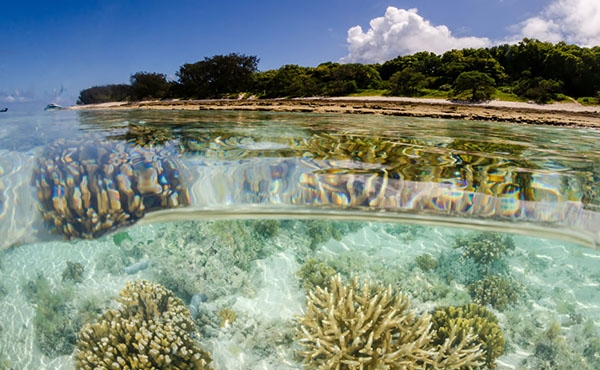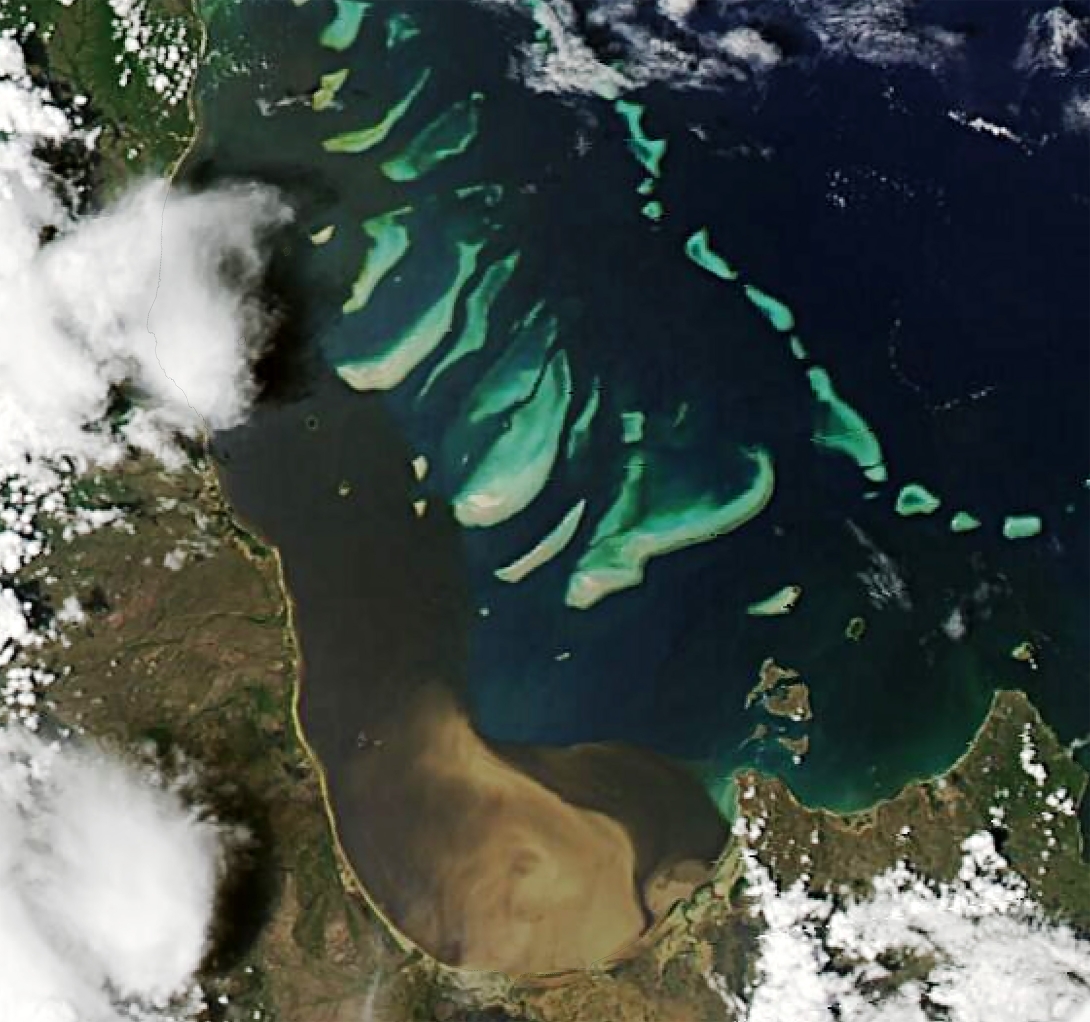39.
Collier, C., Brown, A., Fabricius, K., Lewis, S., Diaz-Pulido, G. et al. 2024, 2022 Scientific Consensus Statement: Summary | Evidence Statement for Question 3.2: What are the measured impacts of increased sediment and particulate nutrient loads on GBR ecosystems, what are the mechanism(s) for those impacts and where is there evidence of this occurring in the GBR? in 2022 Scientific Consensus Statement on land-based impacts on Great Barrier Reef water quality and ecosystem condition, eds J. Waterhouse, M. Pineda and K. Sambrook, Commonwealth of Australia and Queensland Government.
42.
Waterhouse, J., Pineda, M., Sambrook, K., Newlands, M., McKenzie, L., et al. 2024, 2022 Scientific Consensus Statement: Conclusions, in 2022 Scientific Consensus Statement on land-based impacts on Great Barrier Reef water quality and ecosystem condition, eds J. Waterhouse, M. Pineda and K. Sambrook, Commonwealth of Australia and Queensland Government.
227.
Hopley, D., Smithers, S.G. and Parnell, K.E. 2007, The Geomorphology of the Great Barrier Reef: Development, Diversity and Change, Cambridge University Press, Cambridge, UK.
579.
Gruber, R., Moran, D., Robson, B., Waterhouse, J., Logan, M., et al. 2024, Marine Monitoring Program: Annual report for inshore water quality monitoring 2022–23. Report for the Great Barrier Reef Marine Park Authority, Great Barrier Reef Marine Park Authority, Townsville.
584.
Lewis, S.E., Sloss, C.R., Murray-Wallace, C.V., Woodroffe, C.D. and Smithers, S.G. 2013, Post-glacial sea-level changes around the Australian margin: a review, Quaternary Science Reviews 74(15): 115-138.
585.
Bartley, R., Thompson, C., Croke, J., Pietsch, T., Baker, B., et al. 2018, Insights into the history and timing of post-European land use disturbance on sedimentation rates in catchments draining to the Great Barrier Reef, Marine Pollution Bulletin 131: 530-546.
586.
Lewis, S., Bainbridge, Z. and Smithers, S. 2024, 2022 Scientific Consensus Statement: Summary | Evidence Statement for Question 3.1: What are the spatial and temporal distributions of terrigenous sediments and associated indicators within the GBR? in 2022 Scientific Consensus Statement on land-based impacts on Great Barrier Reef water quality and ecosystem condition, eds J. Waterhouse, M. Pineda and K. Sambrook, Commonwealth of Australia and Queensland Government.
587.
Lewis, S.E., Olley, J., Furuichi, T., Sharma, A. and Burton, J. 2014, Complex sediment deposition history on a wide continental shelf: Implications for the calculation of accumulation rates on the Great Barrier Reef, Earth and Planetary Science Letters 393: 146-158.
588.
Kranck, K. 1973, Flocculation of suspended sediment in the sea, Nature 246: 348-350.
589.
Brodie, J.E., Lewis, S.E., Collier, C.J., Wooldridge, S., Bainbridge, Z.T., et al. 2017, Setting ecologically relevant targets for river pollutant loads to meet marine water quality requirements for the Great Barrier Reef, Australia: a preliminary methodology and analysis, Ocean &Coastal Management 143: 136-147.
-
591.
Lovelock, C.E. and Reef, R. 2020, Variable impacts of climate change on blue carbon, One Earth 3(2): 195-211.
592.
Wenger, A.S., Fabricius, K.E., Jones, G.P. and JE, B. 2015, Effects of sedimentation, eutrophication, and chemical pollution on coral reef fishes, in Ecology of fishes on coral reefs Cambridge University Press, Cambridge, United Kingdom, pp. 145-153.
593.
Pearson, R.G., Connolly, N.M., Davis, A.M. and Brodie, J.E. 2021, Fresh waters and estuaries of the Great Barrier Reef catchment: Effects and management of anthropogenic disturbance on biodiversity, ecology and connectivity, Marine Pollution Bulletin 166: 112194.
594.
Magris, R.A. and Ban, N.C. 2019, A meta‐analysis reveals global patterns of sediment effects on marine biodiversity, Global Ecology and Biogeography 28(12): 1879-1898.
595.
Garzon-Garcia, A., Burton, J.M., Lewis, S., Bainbridge, Z., De Hayr, R., et al. 2021, The bioavailability of nitrogen associated with sediment in riverine plumes of the Great Barrier Reef, Marine Pollution Bulletin 173: 112910.
596.
Studivan, M.S., Rossin, A.M., Rubin, E., Soderberg, N., Holstein, D.M., et al. 2022, Reef sediments can act as a stony coral tissue loss disease vector, Frontiers in Marine Science 8: 815698.
597.
Canto, M.M., Fabricius, K.E., Logan, M., Lewis, S., McKinna, L.I.W., et al. 2021, A benthic light index of water quality in the Great Barrier Reef, Australia, Marine Pollution Bulletin 169: 112539.
598.
Zabarte-Maeztu, I., Matheson, F.E., Manley-Harris, M., Davies-Colley, R.J. and Hawes, I. 2021, Fine sediment effects on seagrasses: A global review, quantitative synthesis and multi-stressor model, Marine Environmental Research 171: 105480.
599.
Roca, G., Alcoverro, T., Krause-Jensen, D., Balsby, T.J., Van Katwijk, M.M., et al. 2016, Response of seagrass indicators to shifts in environmental stressors: a global review and management synthesis, Ecological Indicators 63: 310-323.
600.
Adams, M.P., Hovey, R.K., Hipsey, M.R., Bruce, L.C., Ghisalberti, M., et al. 2016, Feedback between sediment and light for seagrass: Where is it important? Limnology and Oceanography 61(6): 1937-1955.
601.
Ward, L.G., Kemp, W.M. and Boynton, W.R. 1984, The influence of waves and seagrass communities on suspended particulates in an estuarine embayment, Marine Geology 59(1-4): 85-103.
602.
Kendrick, G.A., Nowicki, R.J., Olsen, Y.S., Strydom, S., Fraser, M.W., et al. 2019, A systematic review of how multiple stressors from an extreme event drove ecosystem-wide loss of resilience in an iconic seagrass community, Frontiers in Marine Science 6: 455.
603.
Zweifler, A., O’leary, M., Morgan, K. and Browne, N.K. 2021, Turbid coral reefs: past, present and future—a review, Diversity 13(6): 251.
604.
Travaglione, N., Evans, R., Moustaka, M., Cuttler, M., Thomson, D.P., et al. 2023, Scleractinian corals rely on heterotrophy in highly turbid environments, Coral Reefs 42(5): 997-1010.
605.
Brunner, C.A., Uthicke, S., Ricardo, G.F., Hoogenboom, M.O. and Negri, A.P. 2021, Climate change doubles sedimentation-induced coral recruit mortality, Science of the Total Environment 768: 143897.
606.
Goatley, C.H., Bonaldo, R.M., Fox, R.J., Bellwood, D.R. 2016, Sediments and herbivory as sensitive indicators of coral reef degradation, Ecology and Society 21(1): 29.



